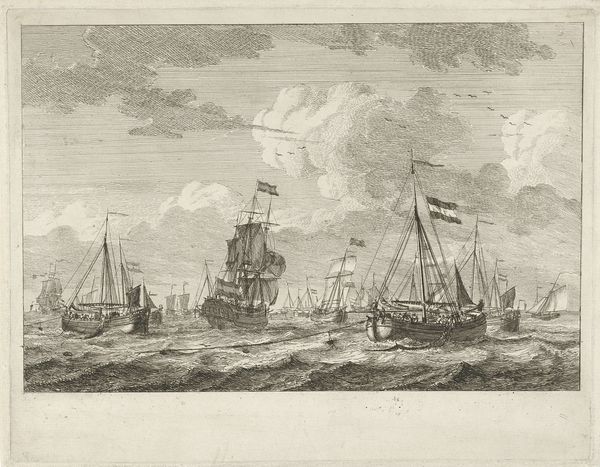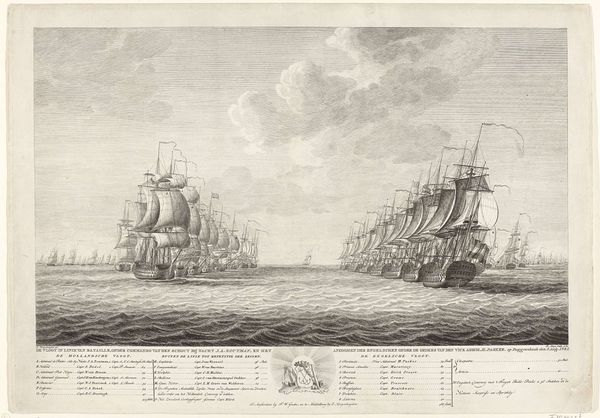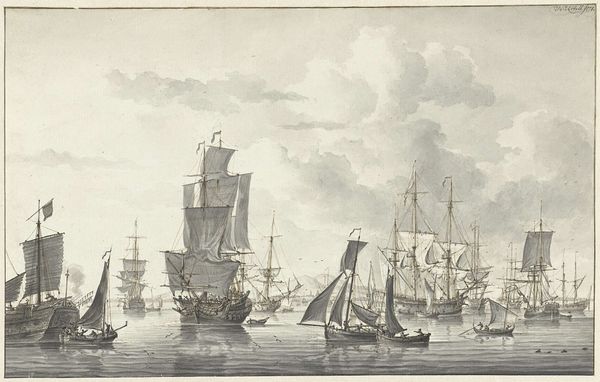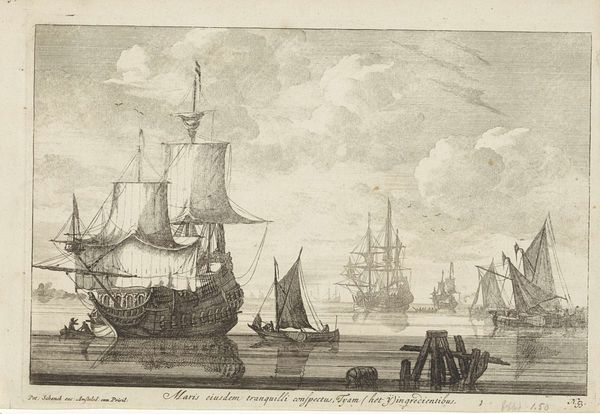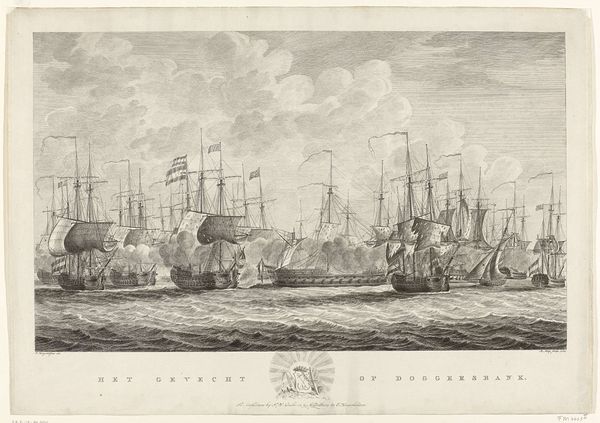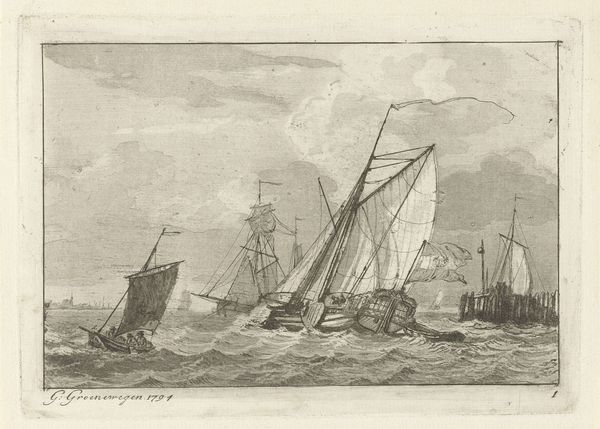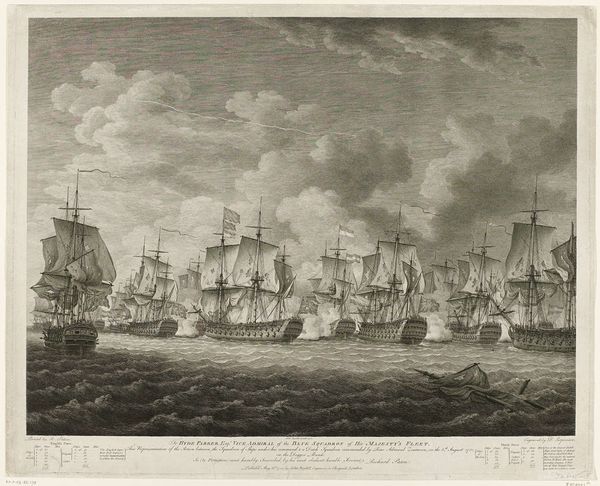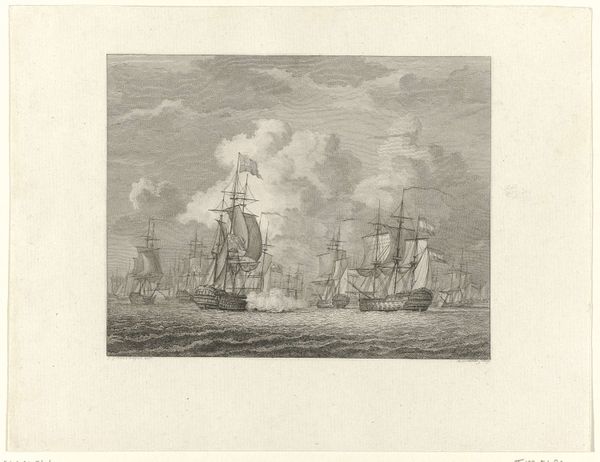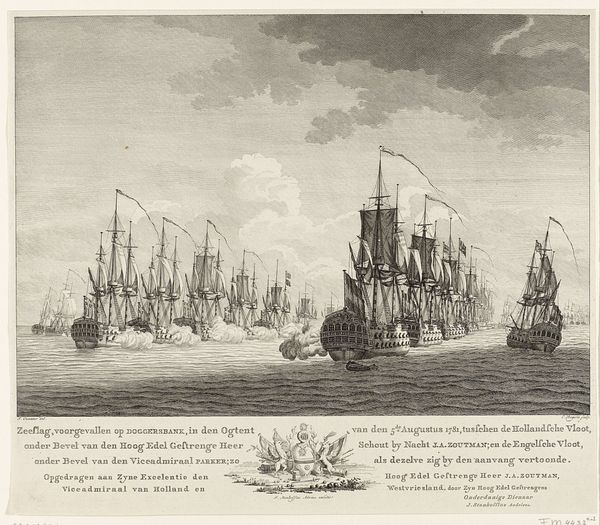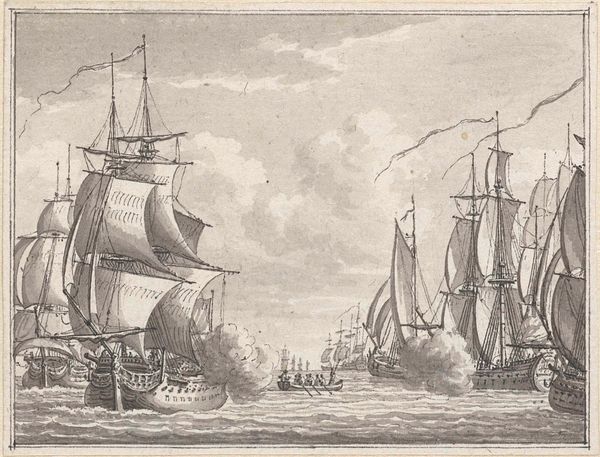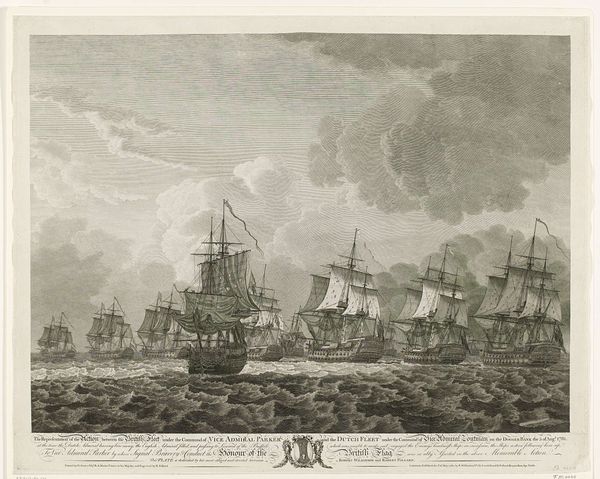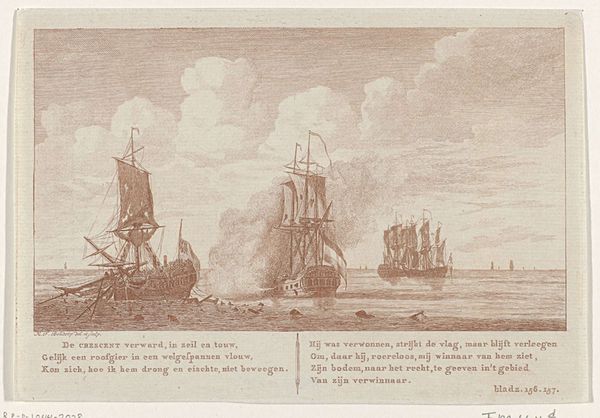
Dimensions: height 413 mm, width 600 mm
Copyright: Rijks Museum: Open Domain
Robbert Muys created this print depicting 'Het fregat de Batavier in reddeloze staat', or 'The Frigate Batavier in a hopeless state,' around 1781 using etching, a printmaking technique that relies on the corrosive properties of acid. The linear precision achieved through etching elegantly depicts the stranded ship and the surrounding fleet. The artist would have covered a metal plate with a waxy, acid-resistant substance called ‘ground’, before scratching an image into the ground with a pointed tool. The plate would then have been immersed in acid, which ‘bites’ into the exposed metal, creating recessed lines. Ink is then applied to the plate, filling these lines, and the surface is wiped clean, before printing by pressing paper against the plate. Here, we see that the frigate in a ‘hopeless state’ seems to be heeling over in shallow water. In the 18th century, naval power was inextricably linked to trade and colonization. This print serves as a reminder of the reliance on skilled labor and the potential risks associated with maritime activities. Consider the materials, making, and context of this print to fully understand the meaning of the artwork, ultimately challenging traditional distinctions between fine art and craft.
Comments
No comments
Be the first to comment and join the conversation on the ultimate creative platform.
